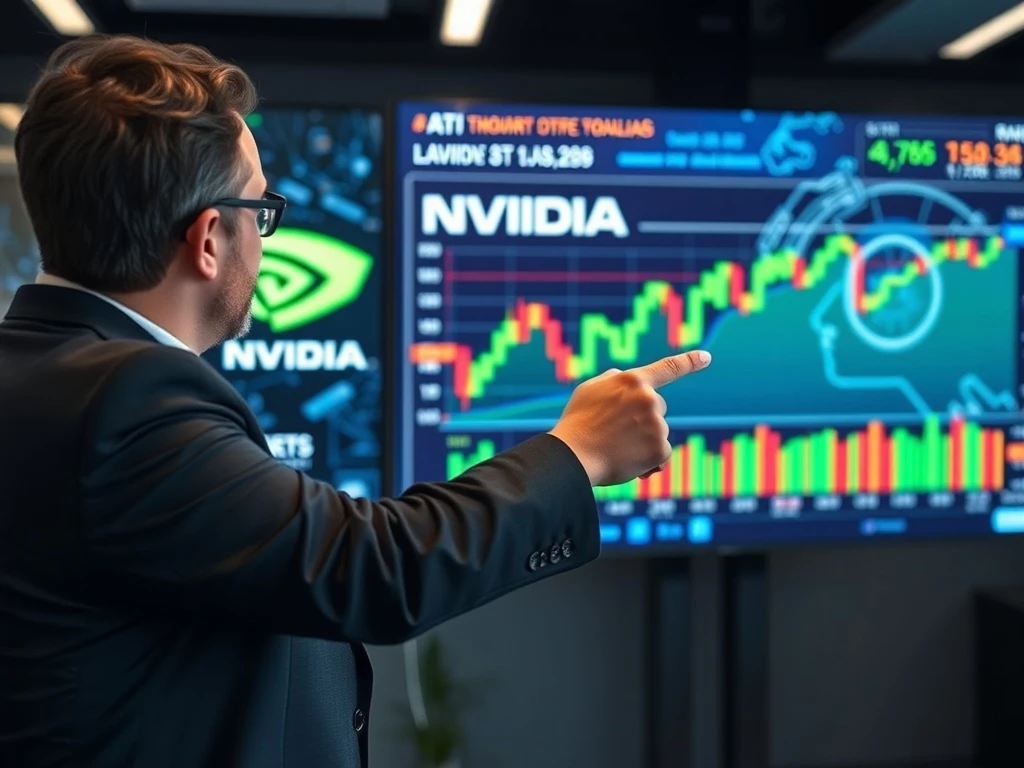Wall Street analysts might be making a critical miscalculation regarding Nvidia stock, according to prominent Wedbush analyst Dan Ives. The technology sector expert recently highlighted potential undervaluation in the semiconductor giant’s market position. Consequently, investors should pay close attention to emerging trends.
Nvidia Stock Analysis Reveals Hidden Value
Dan Ives presents compelling evidence about Nvidia stock potential. The company dominates artificial intelligence processing. Moreover, their graphics technology continues evolving rapidly. Therefore, market analysts might overlook key growth drivers.
AI Revolution Drives Nvidia Stock Growth
The artificial intelligence boom significantly benefits Nvidia stock performance. Data centers worldwide demand their processors. Additionally, cloud computing expansion creates massive opportunities. Thus, revenue projections appear conservative currently.
Market Underestimation of Nvidia Stock
Wall Street potentially underestimates several Nvidia stock catalysts:
- AI infrastructure demand exceeds expectations
- Data center expansion continues accelerating
- Automotive technology represents untapped potential
- Gaming segment maintains strong growth
Financial Performance Supports Optimism
Nvidia stock fundamentals demonstrate remarkable strength. Quarterly earnings consistently surpass estimates. Furthermore, profit margins continue expanding impressively. However, some analysts remain cautious about valuation levels.
Competitive Advantages in Semiconductor Space
Nvidia maintains several competitive edges supporting stock performance. Their technology lead in AI chips remains substantial. Meanwhile, software ecosystem development creates additional value. Consequently, market position appears increasingly secure.
Risk Factors for Nvidia Stock
Despite optimistic outlook, investors should consider potential challenges:
- Regulatory changes could impact operations
- Competition from AMD and Intel intensifies
- Global semiconductor cycles affect performance
- Economic slowdowns might reduce demand
Long-Term Nvidia Stock Outlook
Dan Ives emphasizes long-term potential for Nvidia stock. The company positioned itself perfectly for technological shifts. Additionally, management execution remains consistently excellent. Therefore, current valuation might not reflect future prospects adequately.
Investment Community Response
Many investors applaud Ives’ perspective on Nvidia stock. Institutional ownership continues increasing steadily. Meanwhile, retail investor interest grows daily. Thus, market sentiment appears increasingly positive.
Conclusion: Nvidia Stock Opportunity
Wall Street potentially underestimates Nvidia’s transformative impact. The company leads multiple technology revolutions simultaneously. Moreover, financial performance supports optimistic projections. Consequently, investors might benefit from closer examination.
Frequently Asked Questions
Why does Dan Ives believe Wall Street underestimates Nvidia?
Ives cites underestimated AI growth potential and conservative revenue projections as key reasons analysts might undervalue Nvidia’s market position.
What are the main growth drivers for Nvidia stock?
Primary growth drivers include artificial intelligence adoption, data center expansion, gaming demand, and automotive technology development.
How does Nvidia’s competitive position affect stock performance?
Nvidia’s technology leadership and software ecosystem create significant competitive advantages that support long-term stock performance and market dominance.
What risks should investors consider with Nvidia stock?
Key risks include regulatory changes, intensifying competition, semiconductor cycle volatility, and potential economic slowdowns affecting demand.
How has Nvidia’s financial performance supported stock valuation?
Consistent earnings beats, expanding profit margins, and strong revenue growth have historically supported positive stock valuation trends.
What makes Nvidia different from other semiconductor companies?
Nvidia’s unique combination of hardware dominance, software ecosystem, and AI technology leadership distinguishes it from traditional semiconductor competitors.








